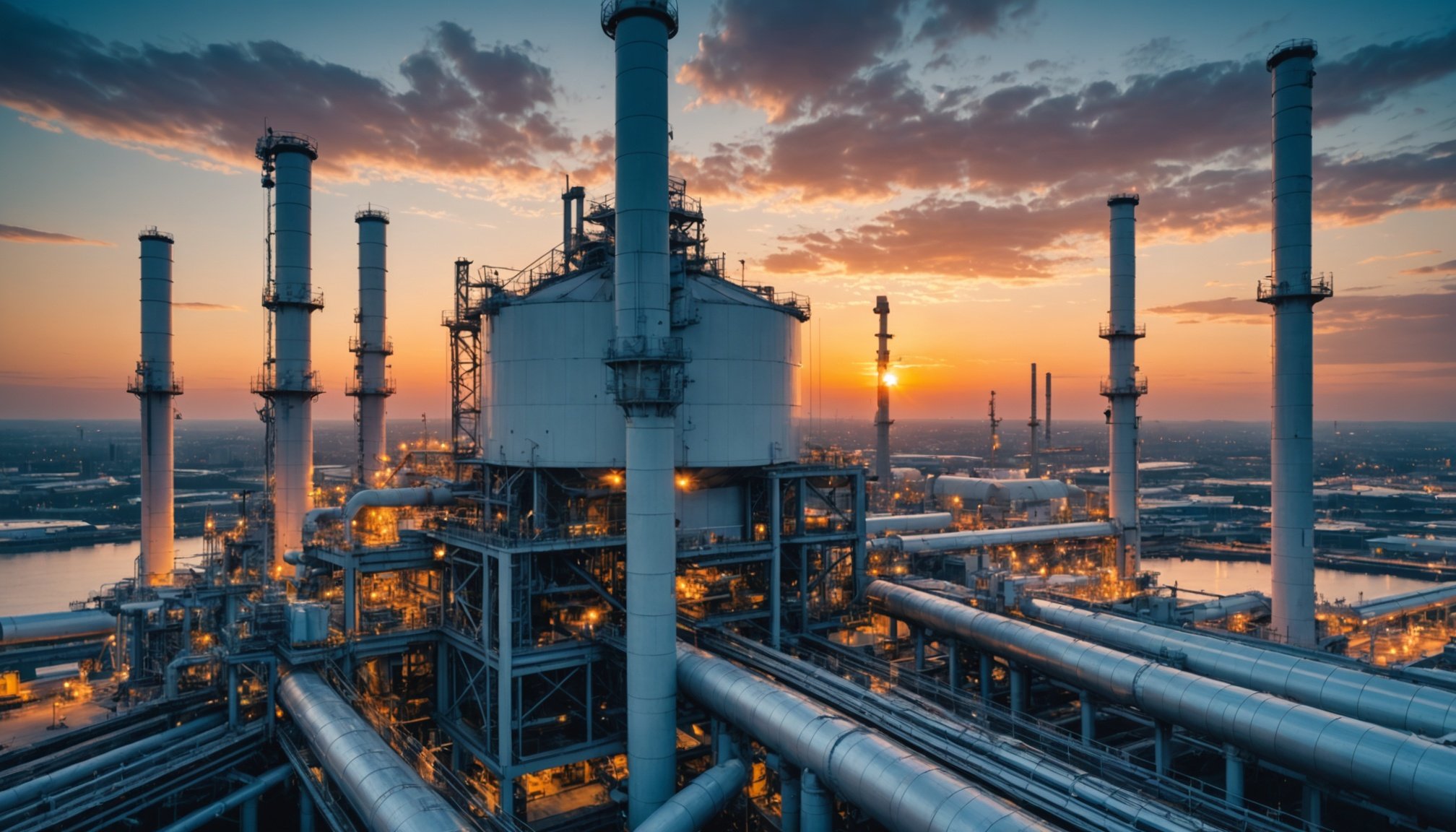Unlocking the Future of Predictive Maintenance in the UK Energy Sector: Leveraging Machine Learning Innovations
The Evolving Landscape of the UK Energy Sector
The UK energy sector is at a critical juncture, facing a myriad of challenges as it transitions towards a more sustainable and efficient future. The integration of renewable energy sources, such as solar and wind power, has introduced new complexities in grid management and energy distribution. One of the key strategies to navigate these challenges is the adoption of predictive maintenance, powered by machine learning innovations.
The Role of Predictive Maintenance
Predictive maintenance is not just a buzzword; it is a game-changer in the energy sector. By leveraging advanced algorithms and machine learning, energy companies can predict equipment failures before they occur, significantly reducing downtime and maintenance costs.
Also to see : Unleashing the power of social media analytics: transforming political campaign approaches in the uk
How Predictive Maintenance Works
Predictive maintenance uses data collected from various sensors and IoT devices to analyze patterns and predict potential equipment failures. Here’s a detailed look at the process:
- Data Collection: Sensors and IoT devices installed on equipment collect real-time data on performance, usage, and environmental conditions.
- Data Analysis: Machine learning algorithms analyze this data to identify patterns and anomalies that could indicate impending failures.
- Predictive Modeling: Advanced analytics and deep learning models predict when maintenance is required, allowing for proactive actions.
- Decision Making: Energy companies can then schedule maintenance during optimal times, minimizing disruptions and costs[3][4][5].
Real-Time Grid Monitoring and Management
One of the significant challenges in the UK energy sector is the integration of distributed renewable energy sources into the existing grid infrastructure. This requires sophisticated grid management systems that can balance supply and demand in real-time.
Also read : Unlocking global expansion: essential scalability strategies for uk saas providers
Leveraging IoT and Machine Learning
IoT devices and machine learning algorithms play a crucial role in this process. Here are some ways they are used:
- Real-Time Data Analysis: IoT devices provide real-time data on energy generation and consumption, which is analyzed by machine learning algorithms to forecast energy demand and supply fluctuations.
- Grid Optimization: AI algorithms adjust energy generation and distribution to balance the grid, ensuring stability and efficiency.
- Fault Detection: Machine learning can detect faults or disruptions in the grid, such as equipment failures or outages, and reroute power to minimize service interruptions[2][3][5].
Optimizing Energy Consumption and Efficiency
Optimizing energy consumption is a critical aspect of the energy sector’s transition towards sustainability. Machine learning and predictive analytics are key tools in this endeavor.
Demand Response Management
Demand Response Management (DRM) is a strategy that adjusts electricity usage in response to signals from grid operators or energy providers. Here’s how AI enhances DRM:
- Predicting Demand Fluctuations: AI algorithms predict changes in energy demand, allowing for real-time adjustments to balance supply and demand.
- Personalized Energy Plans: AI can tailor energy plans based on usage patterns, suggesting shifts in energy use to off-peak hours to reduce strain on the grid and save consumers money[3][4][5].
Energy Storage Optimization
Renewable energy sources like solar and wind are intermittent, making energy storage crucial. AI optimizes energy storage systems by:
- Predicting Energy Generation: AI forecasts the output of renewable energy sources, allowing for the optimal storage of excess energy.
- Real-Time Adjustments: AI adjusts energy storage and release based on real-time conditions, ensuring that energy is available when needed[3][4].
Challenges and Considerations
While predictive maintenance and machine learning offer immense potential, there are several challenges and considerations that energy companies must address.
Legal and Patent Considerations
In Europe, the patentability of AI, software, and algorithm-based inventions is subject to strict criteria. Patent applications must clearly convey a technical effect beyond the software or algorithm itself. This can lead to lower grant rates for patent applications related to automated monitoring and predictive maintenance technologies[1].
Technological and Infrastructure Challenges
The existing grid infrastructure in the UK is ageing and designed for a centralized power generation model. Upgrading and modernizing these systems is essential to accommodate the integration of renewable energy sources. Here are some key challenges:
- Grid Stability: The intermittent nature of renewable energy poses challenges to grid stability. Sophisticated grid management systems are needed to balance supply and demand in real-time.
- Energy Losses: Ageing infrastructure often suffers inefficiencies, leading to energy losses and operational costs. Upgrading these systems is crucial to improving energy efficiency[2][5].
Case Studies and Success Stories
Several energy companies are already leveraging machine learning and predictive maintenance to transform their operations.
E.ON’s Predictive Maintenance Solutions
E.ON’s predictive maintenance solutions have cut grid maintenance costs by 15%, improving service reliability for customers across Europe. By analyzing data from sensors on transformers and power lines, E.ON’s AI systems spot issues before they lead to outages, creating a more stable and resilient grid[4].
General Electric’s Predix Platform
General Electric’s Predix platform, designed for industrial data, has saved the company an estimated $1 billion annually by anticipating and addressing operational issues before they escalate. GE’s AI models predict equipment maintenance needs, preventing costly unplanned outages and ensuring smooth grid operations[4].
Practical Insights and Actionable Advice
For energy companies looking to adopt predictive maintenance and machine learning, here are some practical insights and actionable advice:
Invest in Data Infrastructure
- Data Collection: Ensure robust data collection systems are in place to gather real-time data from various sources.
- Data Analytics: Invest in advanced analytics and machine learning tools to analyze this data effectively.
Collaborate with Technology Innovators
- Partnerships: Foster partnerships with technology innovators to stay ahead of the curve in AI and machine learning.
- Research and Development: Continuously invest in research and development to integrate emerging technologies into your operations[5].
Address Regulatory and Policy Changes
- Policy Advocacy: Engage in policy advocacy to navigate regulatory changes that could impact your operations.
- Scenario Planning: Conduct scenario planning to anticipate and prepare for potential policy shifts[5].
The future of the UK energy sector is intricately linked with the adoption of predictive maintenance and machine learning innovations. These technologies offer the potential to optimize energy consumption, enhance grid stability, and reduce operational costs. As the sector continues to evolve, it is crucial for energy companies to invest in data infrastructure, collaborate with technology innovators, and address the challenges and considerations associated with these advancements.
Detailed Bullet Point List: Key Applications of AI in the Energy Sector
-
Predictive Maintenance:
-
Predict equipment failures by analyzing patterns in data collected from sensors.
-
Minimize downtime and reduce maintenance costs.
-
Enhance the lifespan of renewable energy assets[3][4][5].
-
Grid Management:
-
Forecast energy demand and anticipate supply fluctuations from renewable sources.
-
Balance the grid by adjusting energy generation and distribution accordingly.
-
Detect faults or disruptions in the grid and reroute power to minimize service interruptions[2][3][5].
-
Energy Storage Optimization:
-
Predict when to store excess energy and when to release it to meet demand.
-
Optimize energy storage systems to ensure energy availability when needed[3][4].
-
Demand Response Management:
-
Predict and manage demand fluctuations to balance supply and demand.
-
Create an interactive link between energy providers and consumers for real-time responses to shifts in energy demand[3][4].
-
Renewable Energy Forecasting:
-
Analyze weather forecasts, historical generation data, and real-time conditions to predict renewable energy output.
-
Better balance supply and demand by anticipating renewable energy availability[3][4].
Comprehensive Table: Comparison of AI Applications in Energy Companies
| Company | AI Application | Benefits | Impact |
|---|---|---|---|
| E.ON | Predictive Maintenance | Reduced grid maintenance costs by 15% | Improved service reliability across Europe[4] |
| General Electric | Predix Platform for Predictive Maintenance | Saved $1 billion annually by preventing unplanned outages | Ensured smooth grid operations[4] |
| Dominion Energy | AI-based Forecasting and Predictive Maintenance | Cut downtime by 25%, saving millions in repair costs | Boosted grid reliability in Virginia[4] |
| Ørsted | AI for Turbine Performance Optimization | Increased renewable output by fine-tuning turbine angles | Enhanced efficiency in offshore wind energy[4] |
| Shell | AI for Safety and Maintenance | Ensured safety by monitoring emissions and predicting potential risks | Progressed towards net-zero emissions by 2050[4] |
Quotes from Industry Experts
- “The era of traditional, inflexible energy systems is nearing an end. AI energy companies are creating smarter, cleaner, and more efficient systems.” – autogpt[4]
- “AI will enhance the efficiency, safety, and reliability of the energy sector by enabling predictive maintenance, optimizing grid operations, and improving demand forecasting.” – Infosys[5]
- “Predictive maintenance using advanced algorithms and AI to forecast equipment failures can also minimize downtime and reduce maintenance costs.” – Reddie & Grose LLP[1]
By embracing these technologies and strategies, the UK energy sector can unlock a future that is more efficient, sustainable, and reliable. The journey ahead will be marked by innovation, collaboration, and a deep commitment to leveraging the full potential of machine learning and predictive maintenance.






